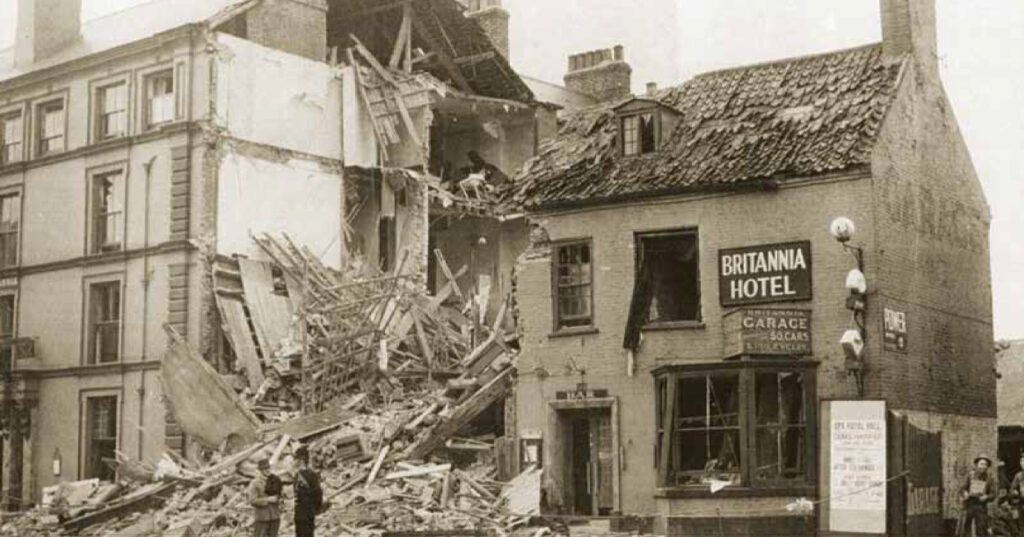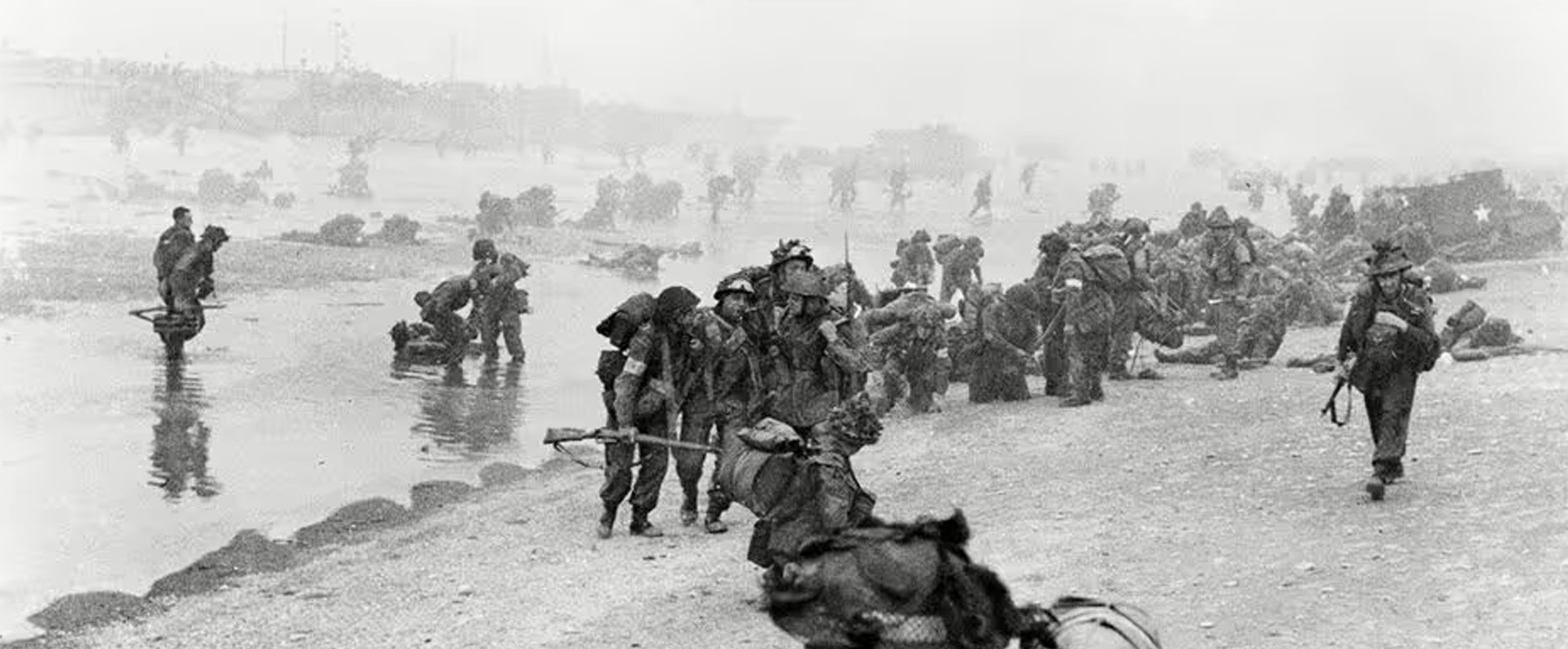
Published in Britain at War in June 2013.
DETACHMENT LEADER THOMAS HOPPER ALDERSON GC
Thucydides, the Greek historian wrote: “The bravest are surely those who have the clearest vision of what is before them, glory and danger alike, and yet notwithstanding, go out to meet it.”
His comments are as apt today as they were when he penned those words well over 2,000 years ago. As someone with a lifelong interest in bravery, I would suggest there are essentially two types of valour – spur-of-the moment bravery and “cold courage”.
I have nothing but admiration for those who have displayed spur-of-the-moment bravery, perhaps a solder who, in the heat of battle and with his blood up, risks his life to save a wounded friend and/or comrade.
However, I have an even greater admiration for those who display premeditated, cold courage, embarking on a mission or duty fully aware of the extremely high risk that they will be wounded or killed. In the words of Thucydides, these are men who confront the “clearest vision of what is before them” knowing they may lose their own life in the process.
Special Forces operatives, in particular, are often called upon to display cold courage but so, too, are bomb disposal experts. It is for this reason that, over the years, I have developed a great interest in the George Cross (GC) and the bravery of the 161 recipients of the award first instituted by George VI on 24 September 1940.
The decoration was created at the height of the Blitz because the King felt that no existing award was really suitable for those men who had displayed heroic deeds on the home front in parachute mine and bomb disposal. Many men had shown incredible courage in terrifying circumstances but they were not entitled to receive the Victoria Cross (VC) because their bravery was not displayed in the face of the enemy.
The GC soon became known affectionately as the “civilian VC” but, in fact, 76 of the first 100 awards were to members of the Armed Forces, predominantly for their parachute mine and bomb disposal work. However, the very first recipient of the GC was a civilian – and a remarkably courageous one too.
During August 1940, Thomas Hopper Alderson displayed outstanding bravery on at least three occasions in his home town of Bridlington, Yorkshire, in his role as a Detachment Leader of Air Raid Precautions.
Alderson was born in Sunderland, Co. Durham, on September 15 1903 and was the fifth of six children. He was brought up in nearby West Hartlepool. He attended the local primary school before going to Elwick Road Senior Boys’ School, where he was head boy. As a schoolboy, he witnessed the bombardment of West Hartlepool by the German High Seas Fleet on December 16 1914, an infamous act that left 86 civilians dead and 424 injured.
After leaving school at 15, he worked as an office boy and a draughtsman, before beginning an engineering apprenticeship. He then joined the Merchant Navy in 1925, becoming a first engineer and eventually served for nine years. He married and, shortly after the birth of the couple’s only child, a daughter, in 1935, he became an engineer for West Hartlepool Council. He moved to Bridlington in 1938, where he got a job as a works supervisor for the local corporation.
After the outbreak of the Second World War, local authorities were given responsibility for safety during air raids and they trained their own workforces in rescue work. Alderson attended a course on the subject and became an instructor.
The small seaside town of Bridlington was bombed several times by the Luftwaffe and it was during this time that Alderson showed his courage in attempting to save the lives of others.
During an early air raid on the town on August 15, a pair of semi-detached houses was destroyed. Alderson and his party were quickly on the scene and learnt that a woman was trapped in her demolished home. Alderson soon tunnelled under the unsafe wreckage to pull the woman to safety.
Some days later, two five-storey buildings were demolished and eleven people were trapped beneath the debris. Those trapped included six people in one cellar, which had completely given way. Alderson reached the cellar by tunnelling 13 to 14 feet under the main heap of precariously unsafe wreckage.
He worked tirelessly in cramped conditions despite the risk of flooding from fractured water pipes. This was not the only danger: enemy aircraft remained overhead and there was also a risk of a gas explosion. Finally, however, he succeeded in releasing all the trapped people even though he received heavy bruising himself.
On a third occasion, some four-storey buildings were demolished by bombing, trapping five people in a cellar. Alderson again led the rescue work and excavated a tunnel from the pavement through the foundations to the cellar. Then he tunnelled under the wreckage and rescued two people – one of whom subsequently died – from beneath a huge commercial refrigerator.
During this difficult work, a three-storey wall swayed precariously in the wind directly over the position where the rescue party was working. Alderson worked almost continuously under the wreckage for five hours, during which time further air raid warnings were received and enemy aircraft were heard overhead.
Alderson’s GC was announced in the London Gazette on 30 September 1940 for what his citation described as “sustained gallantry, enterprise and devotion to duty during enemy air raids”. His citation ended: “By his courage and devotion to duty without the slightest regard for his own safety, he set a fine example to the members of his Rescue Party, and their teamwork is worthy of the highest praise.”
In a radio interview conducted in October 1940, Alderson spoke of rescuing the six people from the cellar of the two collapsed five-storey buildings. “We were called out and found a heap of ruins. The flames were still about and bombs were clomping [dropping] in the distance. We searched around and found a basement door partly uncovered,” he said.
“One of the house walls was still standing and it didn’t look very safe, but we started at that basement door. We cleared it: nothing is too small to move and I passed bits of brick and plaster and wood back along the chain of men ‘til I managed to get inside. The ground-floor joists had collapsed: they were jammed between the basement wall and floor, and this had given protection to four people in a corner.
“There was a big farmhouse table in the middle of the floor: this had partly collapsed and was half-supporting the beams and smashed walls from the floors above. Lying on my side, I began to work a hole over the table keeping a wary eye on the unsafe debris, and then passing bricks and rubbish back along the chain of men.
“At last there was enough space for us to slide the four people head first into the hole over the table, swing their legs ‘round and then pull them backwards through the basement door.”
However, Alderson and his men then realised that a boy and girl were also still trapped under heavy joists towards the centre of the basement. “The [farmhouse] table had now to be carefully broken up and removed, and again debris was passed out bit by bit.
“There wasn’t room to use standard ARP jacks. I called for motorcar jacks and with these managed to raise the main joist a little ‘til it started to crack. By jacking immediately underneath the crack, I raised the joist still further. By this time, the cellar was filling with coal gas and water appeared to be rising on the floor.
“The boy and girl were in severe pain so I called in a doctor to give them an injection. We had to work them free from the joist and slide them out but at last, after four hours work, with hand torches as our only means of light, it was done. Planes were still humming about overhead but I had been too busy to notice them.”
He said of his GC: “It is a very great honour, not just for me but an honour for the whole of the Bridlington ARP services.”
Alderson survived the war and afterwards joined the East Riding of Yorkshire County Council as an assistant highways’ surveyor. Later he joined the rescue section of the new Civil Defence Corps, which was designed to protect the civilian population from the threat of nuclear warfare. Alderson died after a long illness at Northfield Hospital in Driffield, Yorkshire, on October 28 1965, aged 62.
Alderson’s GC is on display in the gallery that bears my name at the Imperial War Museum (IWM), alongside the Silver Medal that he, and three other men, received from the RSPCA for rescuing two horses from a burning stable. However, I do not own Alderson’s gallantry and service medals: they were already in the care of the IWM when the gallery opened in November 2010.
I, in fact, purchased my first GC in the summer of 2010: the decoration awarded to Special Constable Brendan Moss, of Coventry Police, for “superhuman efforts” during the bombing of his home city. Today I own 11 GCs, on top of 179 VCs.
As a result of my interest in bomb disposal work, I have twice been privileged to have been given a first-hand insight into their work. In the spring of 2010, I spent a day observing and participating in the “continuation training” of British servicemen at Merville Barracks in Essex. My hosts for the day were 621 EOD (Explosive Ordnance Disposal) Squadron, part of 11 EOD Regiment.
Then, as recently as last November, I joined a team of volunteers from 11 EOD Regiment for a training day at a quarry in Somerset, when I was the guest of Felix Fund, the bomb disposal charity. The two days made me even more appreciative of the courageous work carried out by our IEDD (Improvised Explosive Device Disposal) operators, and their sense of professionalism and team-work.
The GC is an inspiration decoration and, of course, it has also been awarded to many individuals outside the field of bomb disposal. There is no greater testimony to the bravery of Thomas Alderson and the other recipients of the GC than the chilling fact that 86 of the awards – just over half of the 161 total – have been made posthumously.
Download a PDF of the original Britain at War article
For more information, visit:
LordAshcroftOnBravery.com


